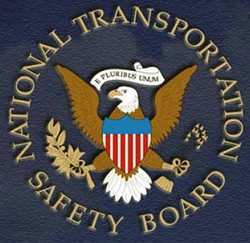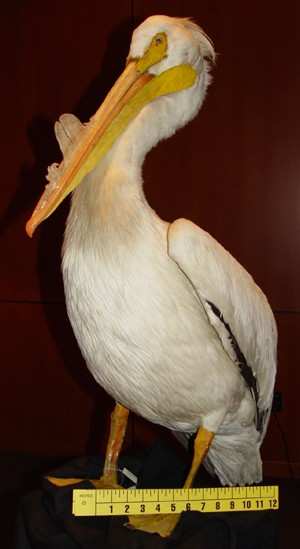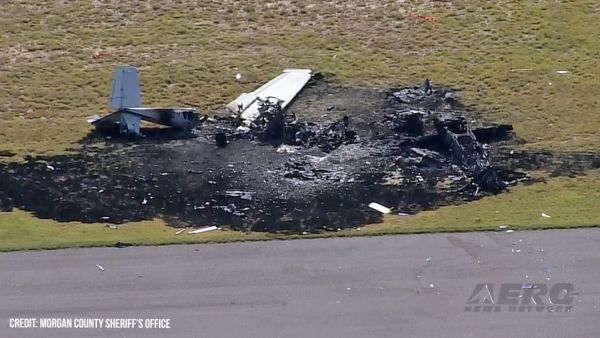Damage To The Aircraft Resulted In Loss Of Control
 The National Transportation Safety
Board determined Tuesday that the probable cause of the 2008 crash
in Oklahoma City, Oklahoma, of a Cessna 500 was airplane
wing-structure damage sustained during impact with one or more
large birds (American white pelicans pictured below), which
resulted in a loss of control of the airplane.
The National Transportation Safety
Board determined Tuesday that the probable cause of the 2008 crash
in Oklahoma City, Oklahoma, of a Cessna 500 was airplane
wing-structure damage sustained during impact with one or more
large birds (American white pelicans pictured below), which
resulted in a loss of control of the airplane.
"While the Board has determined that it was the bird strike that
brought down this airplane," said Acting Chairman Mark V. Rosenker,
"this investigation also uncovered improper and noncompliant
charter operations that should have been identified and
discontinued by the FAA."
On March 4, 2008, at approximately 3:15 p.m. (CST), a Cessna 500
(pictured, file photo), registered to Southwest Orthopedic &
Sports Medicine Clinic PC of Oklahoma City, entered a steep descent
and crashed about 2 minutes after takeoff from Wiley Post Airport
(PWA) in Oklahoma City. Both pilots and the three passengers were
killed and the airplane was destroyed by impact forces and
postcrash fire.
 Major safety issues identified by
this accident investigation focus on airframe certification
standards for bird strikes, inadequate FAA enforcement of wildlife
hazard assessment requirements for airports located near wildlife
attractants, the lack of published information regarding
operational strategies for pilots to minimize bird-strike damage to
aircraft, and inadequate FAA detection of and intervention in
improper charter operations.
Major safety issues identified by
this accident investigation focus on airframe certification
standards for bird strikes, inadequate FAA enforcement of wildlife
hazard assessment requirements for airports located near wildlife
attractants, the lack of published information regarding
operational strategies for pilots to minimize bird-strike damage to
aircraft, and inadequate FAA detection of and intervention in
improper charter operations.
As a result of its investigation, the NTSB issued 10
recommendations to the FAA and reiterated 1 previously issued
recommendation.
Among the recommendations, the NTSB urged the FAA to revise
bird-strike certification requirements for transport category (14
Code of Regulations Part 25) airplanes so that protection from
in-flight impact with birds is consistent across all airframe
structures. Other recommendations in this area include calling for
more stringent verification of airport wildlife hazard assessments
and reporting of wildlife strikes.
To correct the shortcomings uncovered in this investigation
regarding federal oversight of aircraft charter operations, the
NTSB wants the FAA to explore and implement strategies to improve
on-site inspector surveillance activities at airports and of flight
operations to detect and deter improper charter operations. The
NTSB urged the FAA not only to require pilots to identify in the
flight plan the operator and the operating rules under which the
flight is operated, but also require the operator to provide its
customers with written documentation that identifies the terms of
carriage.

Photo Smithsonian Institution's Division
of Birds
The reiterated safety recommendation, initially issued in 2006,
urges the FAA to require aircraft equipped with a cockpit voice
recorder (CVR) to be functionally tested before the first flight of
each day and to perform a periodic maintenance check of the
CVR.
A synopsis of the accident investigation report, including the
findings, probable cause, and safety recommendations, can be found
on the Board Meetings page of the NTSB's website. The complete
report will be available on the website in several weeks.
FMI: http://www.ntsb.gov/events/Boardmeeting.htm
 Classic Aero-TV: Brazilian Hummingbird Alights in U.S.
Classic Aero-TV: Brazilian Hummingbird Alights in U.S. ANN FAQ: Contributing To Aero-TV
ANN FAQ: Contributing To Aero-TV ANN's Daily Aero-Linx (09.01.25)
ANN's Daily Aero-Linx (09.01.25) ANN's Daily Aero-Term (09.01.25): Receiver Autonomous Integrity Monitoring
ANN's Daily Aero-Term (09.01.25): Receiver Autonomous Integrity Monitoring NTSB Prelim: Rockwell International 112
NTSB Prelim: Rockwell International 112





